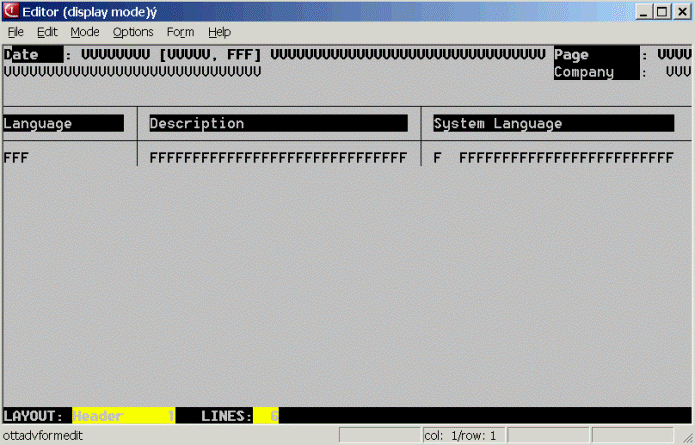LN Reporting Overview
LN supports the following report types:
- 4GL reports
- Report Viewer enabled reports
See the following sections for details.
4GL reports
Most reports in LN are 4GL reports. These reports consist of a layout part and, optionally, a report script. The layout part usually consists of multiple report layouts, such as a header, a before.field and a detail. You can edit these report layouts in the 4GL Report Editor. This editor has an ASCII user interface and does not support advanced features, such as charts and (animated) gif files.

When you finished a 4GL report, you must compile the report. The compiler generates a report object in the runtime data dictionary.
You can print the 4GL reports to different device types, such as a printer, a file, or your own display. The reports generate a fixed font output.
For details on 4GL reports, refer to:
- Reports
- "Report Script Features" in the Infor ES Programmer's Guide
Report Viewer enabled reports
LN also supports Report Viewer enabled reports. You can edit these reports in the Reporting Studio Report Designer. When printed, these reports are displayed in the LN Report Viewer.
The Reporting Studio Report Designer offers various useful features. For example, you can:
- Add various chart types to your reports, for example pie charts, line charts, and bar charts.
- Attach a dialog to a graph, where users can enter selection criteria.
- Create crosstab reports that show data in two dimensions, for example: sales per quarter.
For details on the Reporting Studio Report Designer, refer to the Reporting Studio online help.


In the runtime data dictionary, the report designs are stored in XML files with a ".rptdesign" filename extension.
The LN Report Viewer only works in combination with Web UI. Worktop users cannot print Report Viewer enabled reports.
From the Report Viewer, you can send a report to, among other things, a printer or a PDF file. For details, refer to To use the Report Viewer (OP).
Report Viewer enabled reports are created in a report project. For details, refer to To create a report project.
Report types
You can create 2 types of Report Viewer enabled reports:
- Session-based reports. For details , refer to Session-based Reporting.
- Query-based reports. For details , refer to Query-based Reporting.